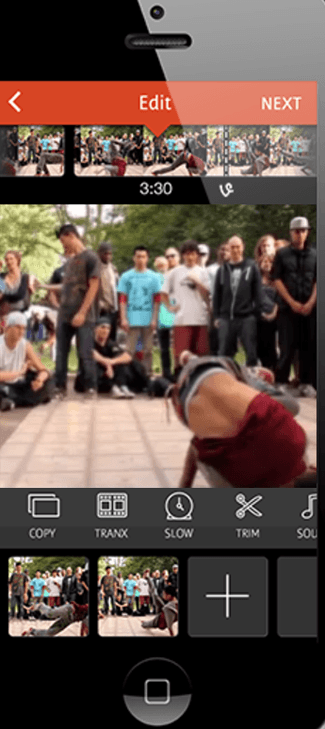Create Algorithm-Winning Facebook Videos

For starters, Facebook algorithms prioritize friends' posts over brands' posts when it comes to what users see in their personalized News Feed. For many businesses, however, the 2016 update reduced their Page's reach and referral traffic.
Other News Feed algorithm tweaks - such as the inability to edit metadata when sharing links, which can reduce post quality, as well as Facebook accounting for a Page's actual website performance - have or will contribute to less reach, traffic and engagement for companies. Finally, in the spirit of catching up marketers on possible changes, engagement for link posts (likes, comments shares) has dramatically declined. The bright spot among all these algorithm updates putting Pages in check, however, is video.
Consider these findings:
- Publishers' Facebook videos are shared seven times more than links (source).
- People spend more than three times more time watching a Facebook Live video on average compared to a video that's no longer live (source).
- Daily watch time for Facebook Live broadcasts has grown by more than four times, and 1 in 5 Facebook videos is a Live broadcast (source).
- Mark Zuckerberg has stated in an earnings call, "I want to start by talking about our work around putting video first across our apps. People are creating and sharing more video, and we think it's pretty clear that video is only going to become more important. So that's why we're prioritizing putting video first across our family of apps and taking steps to make it even easier for people to express themselves in richer ways."
If marketers want to compete for attention on Facebook they too will need to put video first. When taking into account how the social media network ranks videos, here are a few tips to create algorithm-winning Facebook videos:
1. Consider Completion Rate
In Jan. 2017, Facebook announced a change to the way it ranks videos in News Feed to adjust the value it gives to how much of a video is watched. The percent of each video a user watches indicates to Facebook how much a person enjoyed the material, weighting percent completion more heavily the longer a video is. Therefore, if a marketer creates a long video with, say, an average completion rate of 70 percent, the video can rank in News Feed higher than a shorter video that averages, for example, 90 percent completion rate. This ranking factor tells us that shorter videos do not necessarily show up higher in the News Feed than longer videos. Rather, the videos themselves need to keep viewers engaged from the first second to the last second in order to earn higher completion rates and to benefit from the extra weight Facebook gives long videos with high completion rates.
Creating videos is an art but know that completion rate matters and that brands will benefit from longer videos with high completion rates. Knowing this, videos will need to be set up in a way that captures and keeps attention, providing teasers about what is to come and backing up those teasers with information that matters to the audience.
2. Go Live (Longer)
If the advice to use Facebook Live is starting to seem repetitive, it likely is. The advice, however, should be taken but not without preparation. The social media network states that Facebook Live videos are more likely to appear higher in News Feed when those videos are actually live, compared to after they are no longer live. Therefore, brands should alert followers they are going live and plan content so that they can stay live longer. While the appeal of Facebook Live is that a lot of it is spontaneous, a rough outline should be addressed so that the video has time to build an audience.
3. Make Videos Accessible
Facebook has empowered those that would benefit from closed captioning the opportunity to turn on closed captioning for videos within their News Feed. Facebook is now allowing publishers to include closed captions in Facebook Live as well, "helping people who are deaf or hard of hearing to experience live videos." If Facebook wants to build a community that everyone is a part of, then it is only a matter of time before accessibility of both videos, posts and even a Page's website, will be part of News Feed ranking. Page admins using video need to learn how to add closed captions to Facebook Live broadcasts (and likely employ developer help to implement).
4. Avoid "Clickbait"
In Aug. 2017, Facebook announced two updates "that will limit the spread of stories in News Feed that feature either fake video play buttons embedded in their imagery or videos of only a static image." Facebook will begin demoting stories that feature fake video play buttons and static images disguised as videos in News Feed. In other words, marketers should not take a screen grab of a video, post it to Facebook and include a link to their website. Like many updates, this change means that Facebook will limit content that is not hosted on its network and links somewhere else instead. Facebook clearly looks to keep its users on Facebook.
 5. Use Fun Apps
5. Use Fun Apps
A smartphone's camera (perhaps a tripod too) is really all a marketer needs to execute the videos they have in mind. There are some mobile applications, however, that can make videos look more professional and fun. Facebook, for example, has mentioned the following to add creativity to videos: Boomerang, Stop Motion Studio, Quik, Piclab, Videoshop (shown), Legend and Vidlab.
6. Follow Design Recommendations
Like image or text-based posts, how videos appear in the News Feed can be different than how marketers expect them to look. Facebook makes several design recommendations that Page admins would be wise to follow such as aspect ratio (16:9 or 1:1). When marketers are ready to create, check out the recommendations that are for ads but can work for organic posts too.
7. Know What's Already Working
There are many examples of Facebook videos that have kept and captured the attention of brands' current and prospective audiences. This summer, for example, NewsWhip's data and analysis surfaced the following trends from the top video publishers on Facebook:
+ For non-Live videos, human interest stories are doing well
+ Showing viewers something quirky and out-of-the-ordinary also drives engagements
+ Videos on passionate subjects, like human rights or social injustice can also provoke strong reactions
+ For Live video, breaking news creates a virtual meeting ground for viewers
+ Niche publishers continue to see heightened engagements, so experiment with a tight focus
While the content of a video will determine a person's likeliness of watching it, completing it, sharing it and more, there are pre-production steps that marketers must get right to appease the algorithms. Following Facebook's recommendations, announcements and more will keep marketers on the right side of the algorithms."

Subscribe to Our Newsletter!
Latest in Social Media










